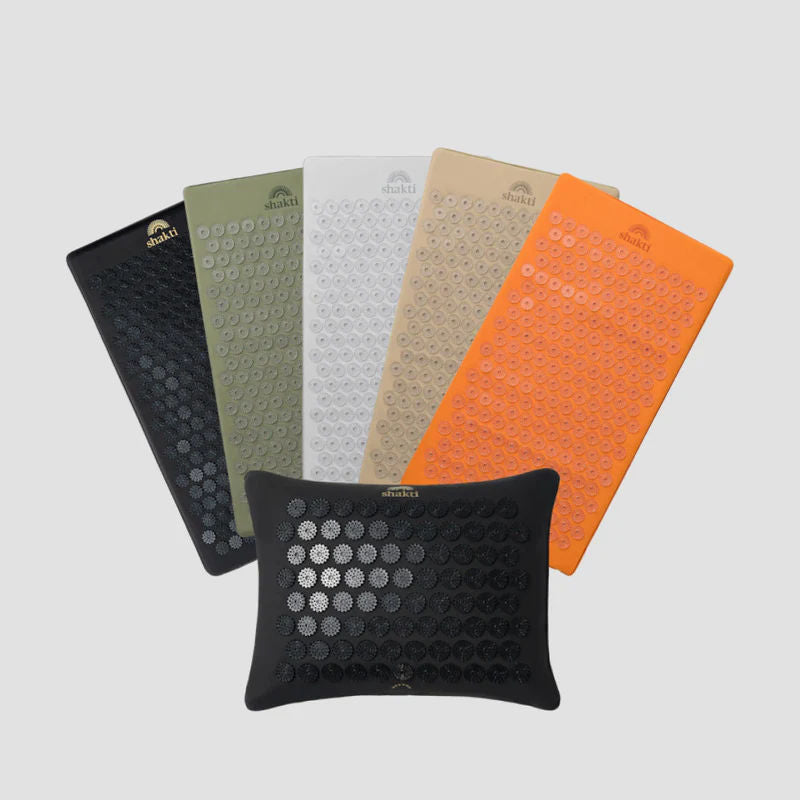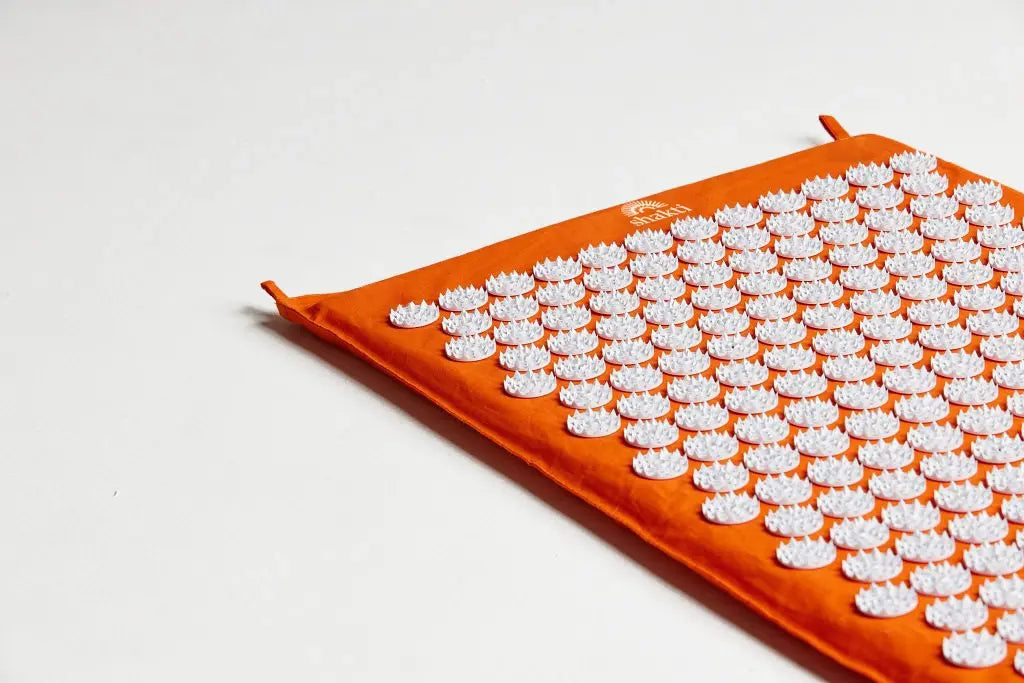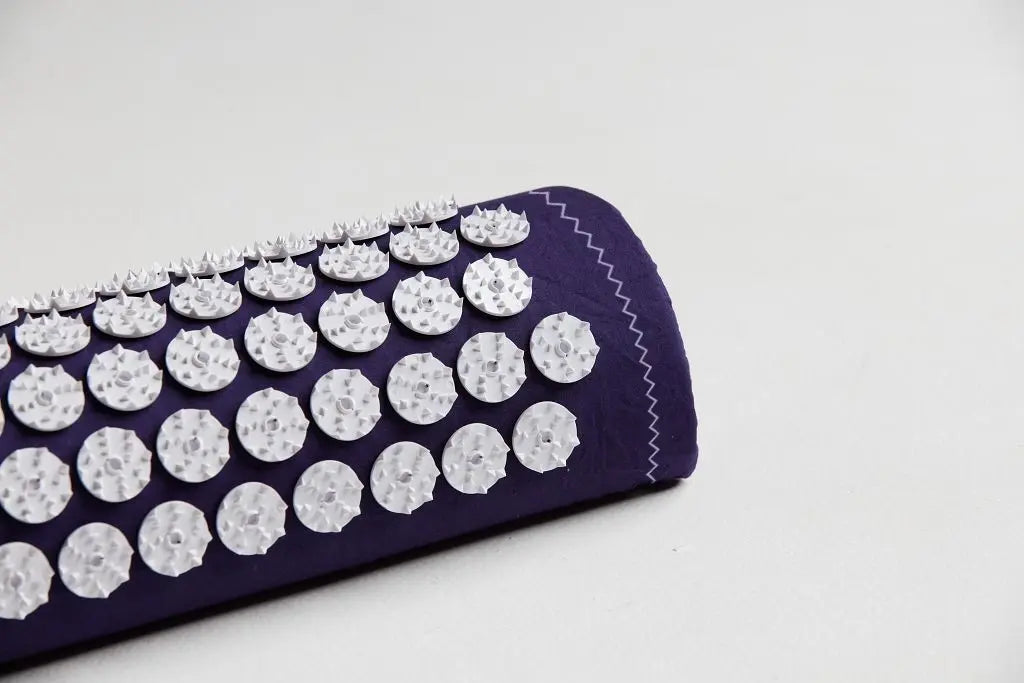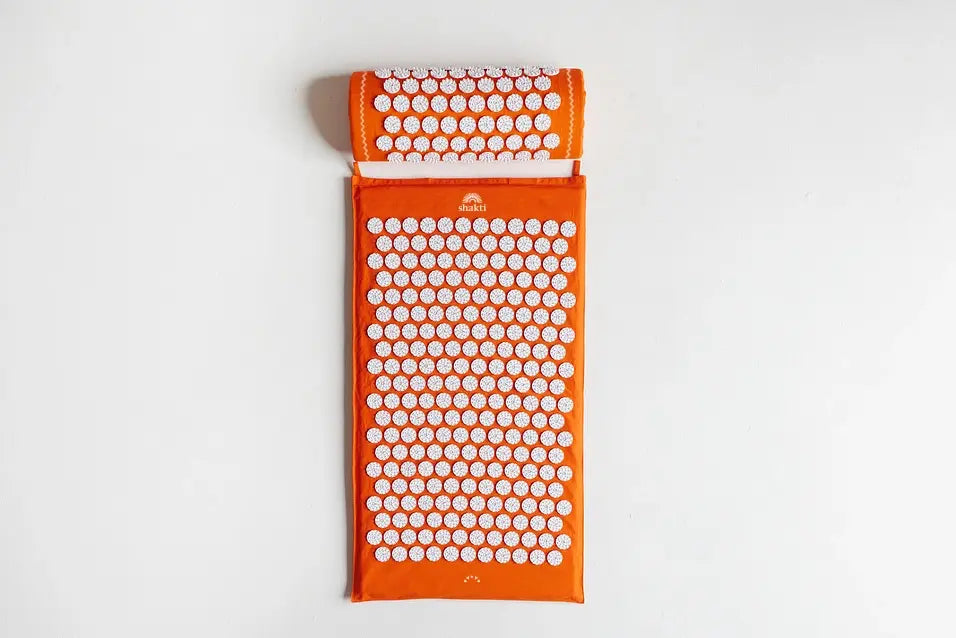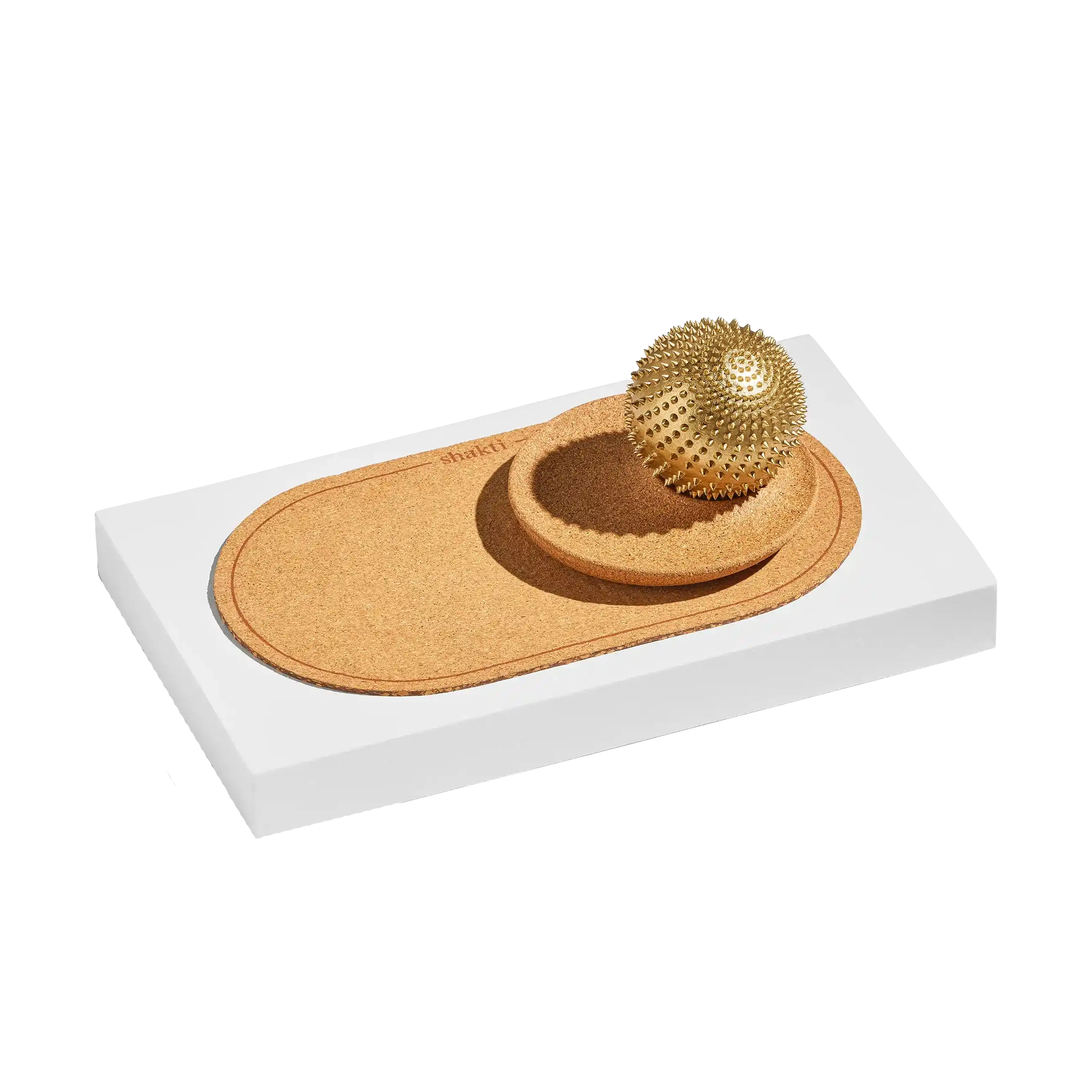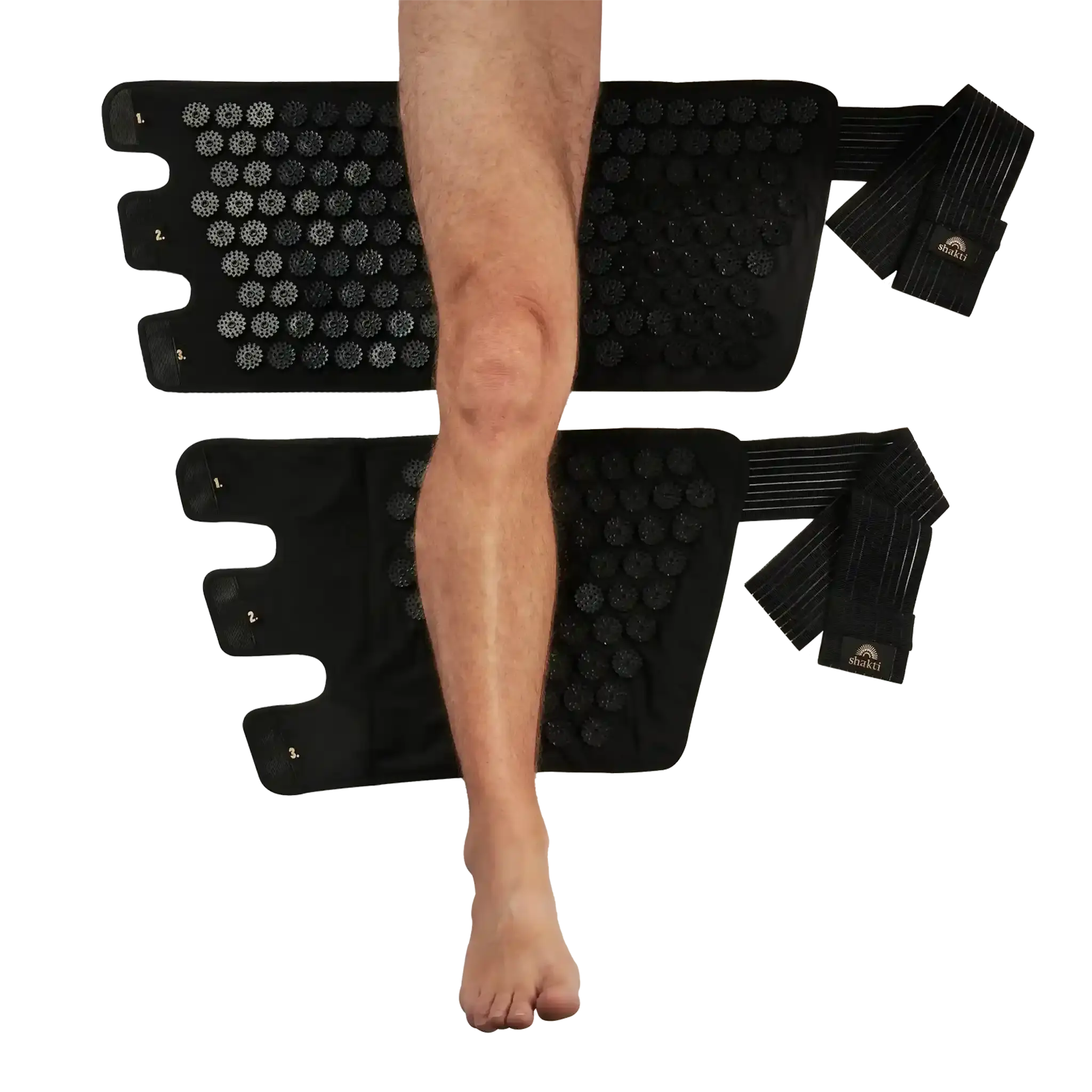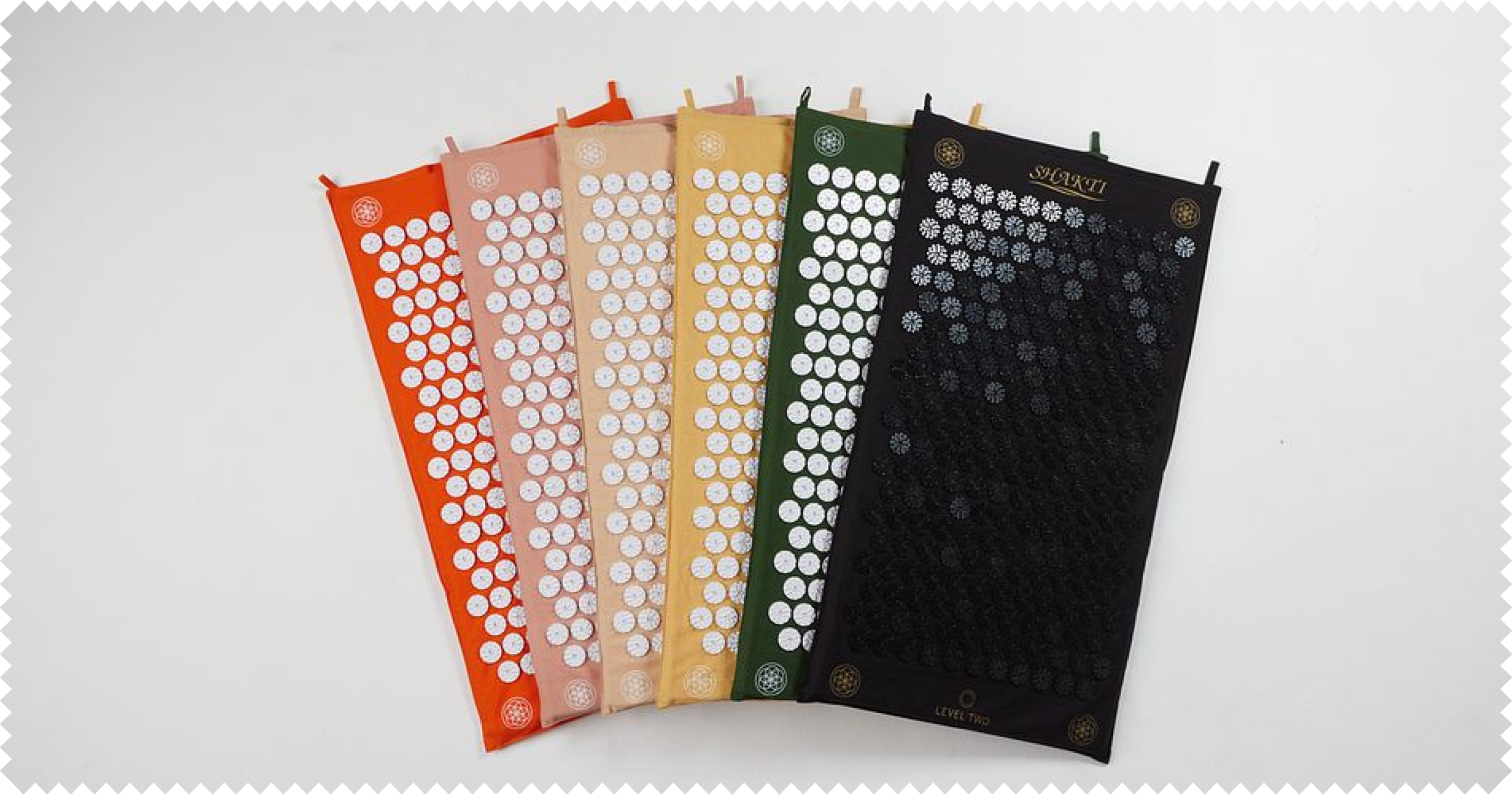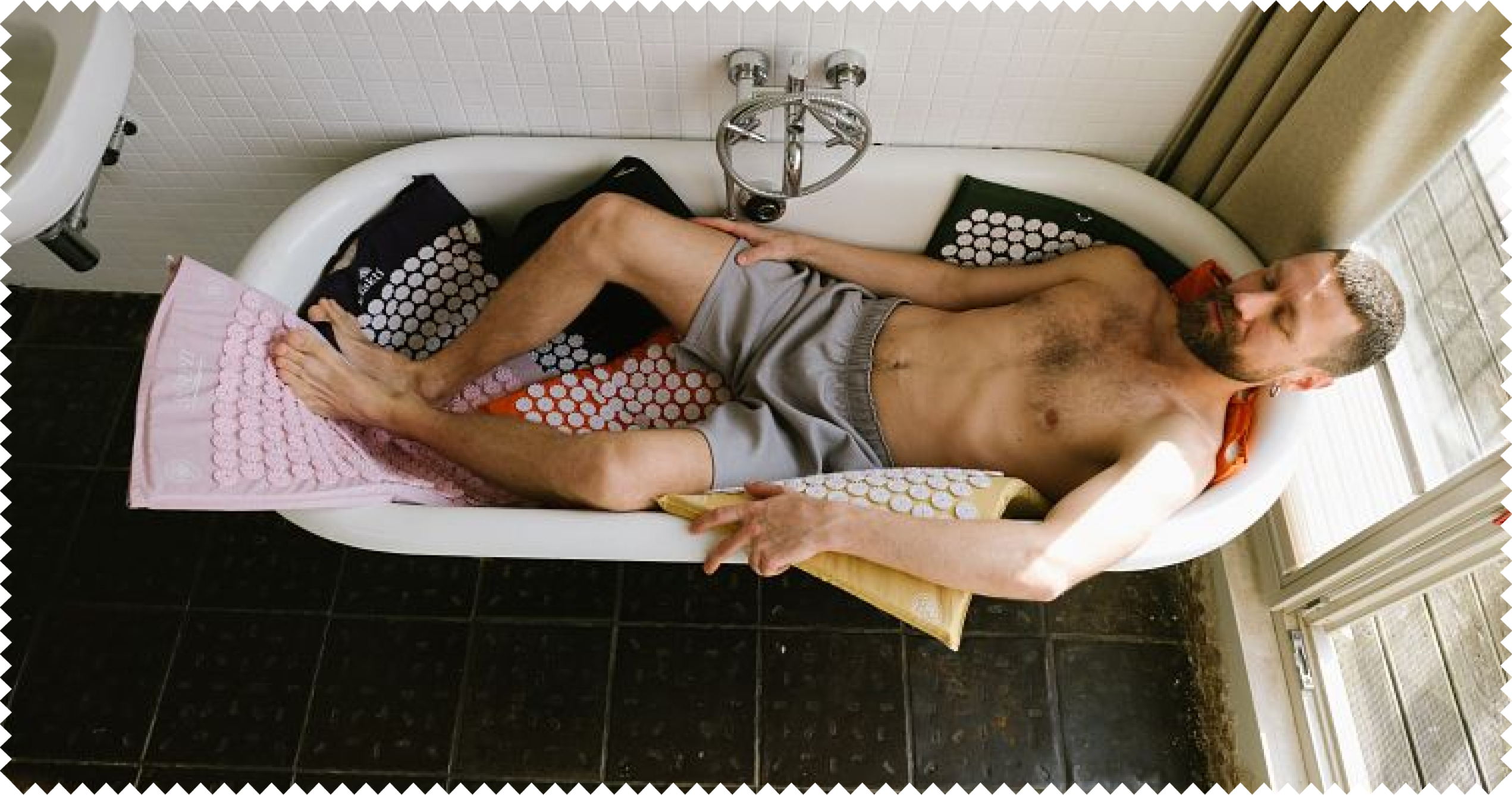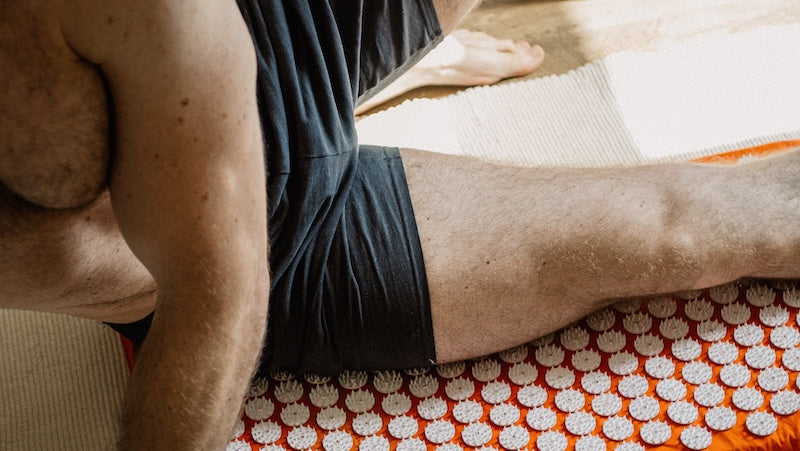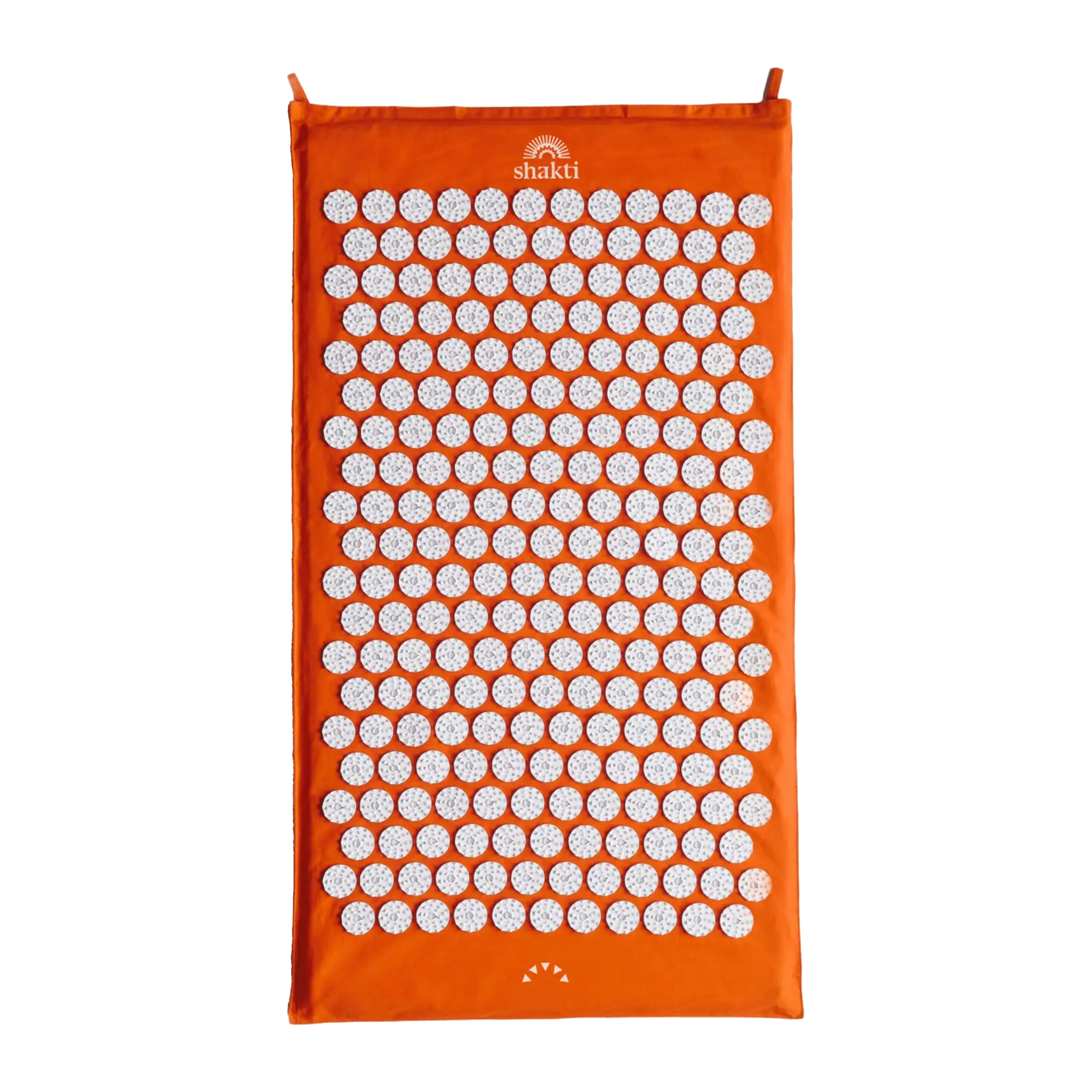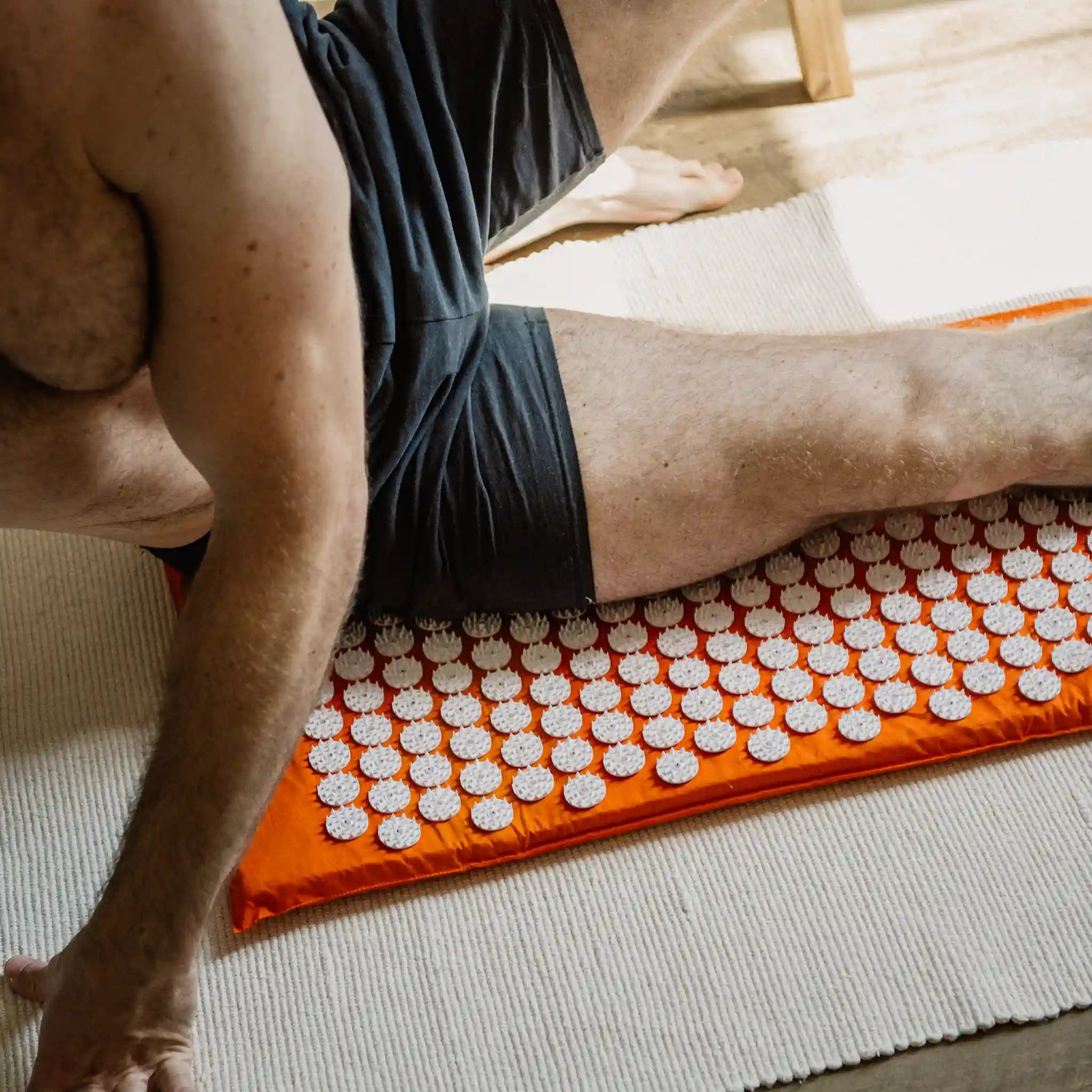Do you feel a pull in your thigh and the next time you move, a sharp pain jolts through your muscle? Or an unpleasant cramp shoots through your leg after sitting for a long time at the office? Then you're probably dealing with a mild thigh strain - an injury that not only affects athletes, but almost everyone at some point in their lives.
In this guide, you will find out how a hamstring strain occurs and what measures can help you to recover effectively and regain your usual freedom of movement.
Content
2. causes of a hamstring strain
3. muscle strain in the thigh: symptoms and complaints
4. localization of a pulled muscle in the thigh
5th thigh strain - what to do?
6. thigh strain: duration and treatment
7. how you can prevent a pulled thigh
8 Conclusion: You can do a lot yourself if you have a pulled thigh
What is a hamstring strain
Your thigh muscles consist of a large number of myofibrils that join together to form so-called muscle fibers. To ensure maximum mobility, the muscles have a certain degree of elasticity. If your muscle is stretched excessively by a jerky movement or extensive sport, tiny damage occurs in the myofibrils, resulting in the easiest, most common form of muscle injury - a thigh strain. If you continue to stretch the muscle fibers after this injury, they can tear either individually (muscle fiber tear) or as a whole structure (muscle tear)! For this reason, it is important to rest the thigh immediately after a pulled muscle.
Causes of a hamstring strain
A pulled muscle usually occurs unexpectedly - especially during movements such as walking or sport. If you brake suddenly, accelerate rapidly or make a spontaneous change of direction, your thigh muscle contracts and is tense. However, the additional tensile forces stretch it in the opposite direction, literally "pulling" the muscle and overloading or overstretching it.
Typical activities that promote such a strain include sports with intensive sprints and abrupt stops such as soccer or tennis, hiking, twisting your ankle or slipping around the house and garden.
The following situations can also trigger a pulled muscle in the thigh:
- Inflammation of the pubic bone
- a hernia that exerts pressure on the surrounding muscles
- Inflammation of the tendon insertions
- Direct blows to a stretched muscle
- Overexertion or fatigue due to repetitive movements
- Shortened muscles in the trunk and hip area due to frequent sitting or one-sided training
- Static imbalance in the area of the spine
- incompletely healed injuries

Muscle strain in the thigh: symptoms and complaints
What does a pulled thigh feel like? The main symptom of a thigh strain is the sharp, abrupt onset of pain. The affected area often feels hardened and is swollen. The pain associated with a pulled muscle generally subsides at rest, but is all the more intense with renewed exertion and can radiate into the calf or pelvis. Loosening exercises do not bring any improvement and those affected can no longer walk properly due to the reduced muscle strength in the thigh.
Good to know: A pulled muscle, a torn muscle fiber and a torn muscle all cause severe pain, but with subtle differences. With a thigh strain, the pain hits you suddenly and intensifies with movement. A torn muscle fiber goes beyond the pain, shows a bluish bruise and often leaves a feeling of tension and a palpable dent in the muscle. The most serious form of muscle tear results in unbearable pain and leads to the muscle no longer functioning and requiring medical treatment.
Localization of a pulled muscle in the thigh
You can suffer a hamstring strain in various areas and muscle groups. Strains in the back of the thigh are usually caused by very fine tears at the muscle-tendon junction. Athletes who do not warm up sufficiently before training or who run a lot are at risk. In contrast, a pulled muscle in the front of the thigh usually occurs when the quadriceps muscle is stretched excessively by a fast, powerful leg movement and contracts at the same time.
The adductor muscles stabilize the hip joint and ensure that your leg moves towards the center of the body. They are affected on the inside when the thigh is strained - mainly after "splits-like" attempts at movement.
The muscles located there, such as the iliotibial tract, are overloaded by repetitive activities, for example cycling, and become inflamed.
Regardless of whether the symptoms of a pulled thigh manifest themselves at the front, side or back - if you act correctly, you can speed up the healing process in the event of a pulled thigh, prevent further damage and get back on your feet quickly.
Thigh strain - what to do?
A pulled muscle in the thigh causes severe pain and can significantly affect your everyday life. If you have sustained such an injury, the PECH rule is the most effective immediate measure: rest, ice, compression, elevation.
It is therefore essential that you stop the activity you are currently doing if you have symptoms of a pulled muscle. Further movement would stimulate blood circulation and promote tissue damage and swelling. It could also make the injury worse.
The second answer to whether you should cool or warm a thigh strain is "ice". The cold causes your blood vessels to contract, the blood flow slows down and less fluid leaks into your tissue. This in turn reduces swelling, bruising and pain.
The following applies when cooling a pulled muscle: use ice packs or socks with crushed ice and cool immediately for a maximum of 10 to 15 minutes at a time. Repeat this procedure every hour for the first 48 hours after the injury. Avoid direct contact between the ice and your skin at all costs, as it can be damaged by the cold.
The light compression provided by an elastic bandage stabilizes the area where the strain is located and limits internal bleeding or swelling. Make sure the bandage is tight, but not too tight. It is also helpful in the first phase after the injury to elevate your leg above heart level. This allows less blood to enter the affected area and your lymphatic system can remove any fluid that has escaped from the tissue more efficiently.

Thigh strain: duration and treatment
As a rule, a slight strain in the thigh heals within four to six days if the PECH rule is followed and does not leave any permanent damage.
Start with light movements in the pain-free area and only increase the intensity slowly so that your muscle can get used to the effort. Full exertion should only take place after the strain has completely healed - otherwise the risk of re-injury is too great! It can therefore take two or more weeks before you are allowed to fully strain your muscle, especially if you do sports such as sprinting, soccer or tennis.
Caution: A severe strain in the thigh with unbearable pain should be checked by a medical professional to be on the safe side - not least to detect any torn muscle fibers or muscles at an early stage.
Exercise for a pulled thigh
As you already know, you should first rest your thigh if you experience pain and cramps. After the acute phase, however, it can be helpful to treat the thigh strain with targeted exercises.
The following exercise aims to relieve discomfort, increase the elasticity of your muscles and prevent further strains in your thigh.
To do this, stand up straight near a wall. Support yourself against the wall with one hand. Grasp your foot with your free hand and move it towards your buttocks until you feel a pull in your front thigh muscles. Try to hold the position for a few seconds and then switch sides.
As a preventative measure, do the exercise one to three days a week. If you have a pulled thigh, perform the sequence several times a day with 3 to 5 repetitions per side - always with a slight bounce and never beyond your pain threshold!
A second effective exercise for such a pulled thigh is the forward lunge.
From a straight standing position, first put one leg forward and then stretch the other backwards until you feel a pull in your thigh. Hold the position for a few seconds and repeat the exercise several times, alternating sides.
Treating pulled muscles with acupressure and massage
Heat and increased blood circulation should be avoided at all costs with a fresh pulled muscle. However, to speed up healing after the acute phase, it can be useful to massage the pulled muscle in the thigh or to relax the muscles with the help of an acupressure mat. As a proven aid for circulation and promoting well-being, the mat is based on millennia-old principles of traditional Chinese medicine and can stimulate the healing process for injuries.
If you have a pulled thigh, position yourself on the mat so that the affected area is in direct contact with the many small nubs on the acupressure mat. The nubs stimulate your acupressure points and can thus initiate your body's self-healing process. We recommend a session of around 20 minutes per day.
If the pulled muscle is in areas of your thigh that are difficult to reach with the mat or if you are looking for a particularly targeted application, you can use an acupressure cushion as an alternative.
A gentle massage with essential oils or calendula ointment as a tried and tested home remedy for a pulled thigh can prove to be a real boon. Apply a small amount of the oil or ointment to your hands. Massage the affected area with light, circular movements. Make sure that the movements do not cause pain, but rather a feeling of warmth and relief.
Can a thigh strain be taped?
With kinesiotaping, you use special self-adhesive tapes of different thicknesses to achieve targeted relief of certain muscle areas. In the case of a pulled thigh, you can tape the front or apply the tapes to other areas at a slightly oblique angle over the affected muscle. It is best to check with the manufacturer of the kinesio tape in question and wear the tapes continuously for at least a week.
How to prevent a pulled thigh
-
Warm up properly
Start every activity or training session with a thorough warm-up to prepare the muscles for the upcoming exertion. Stretching exercises that increase flexibility should also be included. -
Regular training
Continuous training not only improves strength, coordination and endurance, but also reduces the risk of injury from a pulled thigh, as a well-trained muscle is better able to withstand strain. -
A gentle introduction to new sports
Give your body time to get used to new movements. Don't rush it, but gradually increase the intensity and duration. -
Correct technique
Pay attention to the correct execution of movements to avoid incorrect strain and the associated injuries. -
Sufficient recovery
Give your body enough recovery time between training sessions. -
Take performance limits into account
Listen to your body and don't overload it. Exhausted muscles are more susceptible to injury because they are less able to compensate for sudden and strong forces. -
Stretching exercises
Integrate regular stretching exercises into your routine to maintain muscle flexibility and prevent muscle shortening.
Conclusion: You can do a lot yourself if you have a pulled thigh
A pulled thigh is a challenge that almost every sports enthusiast or active person faces at some point. Immediate measures such as rest, cooling and compressing, as well as careful self-care with massages, exercises, kinesiotape or an acupressure mat can simply speed up the healing process and alleviate the discomfort associated with the strain. If you also make sure to warm up your muscles before every activity and respect your physical limits, you will stay fit, active and injury-free no matter how active your adventure.


